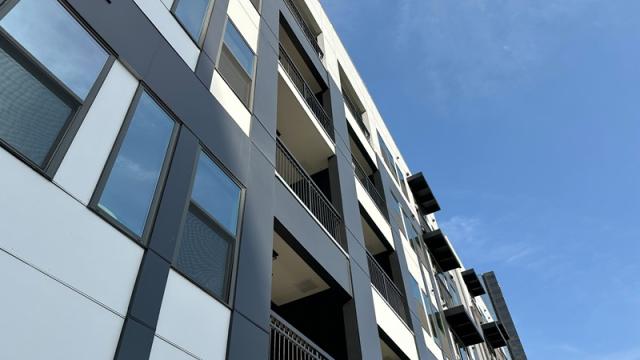webinar

Apartments.com

Multifamily Rent Growth in Midwest Surges Ahead as Sun Belt Falls Behind
The Sun Belt led rent growth through the pandemic, but now a new regional leader has emerged. How are regional trends shaping up in 2023, and which areas of the country are best positioned to thrive in the years ahead? Jay Lybik, national director of multifamily analytics for CoStar Group, offered his insights at the 2023 NAA Apartmentalize conference.
Overall market trends
Today’s regional trends are occurring in an increasing challenging environment for multifamily owners and operators. Zooming out to examine the current nationwide market conditions, Lybik pointed to the twin factors of low absorption and high supply, with more construction on the way. This has contributed to rent growth deceleration, with year-over-year rates falling from a high of 11 percent at the end of 2021 to 1.7 percent as of early June.
“We have failed to see more than 100,000 units of absorption in apartments nationally,” Lybik said. “This lack of demand has come at probably the worst time, as we’re anticipating having the most units delivered since the 1980s.”
This combination of factors has created “the perfect storm” for property performance, Lybik said, but the severity of these conditions varies by region and local market.
The supply and vacancy outlook by region
When broken down into the four main regions, deliveries are expected to increase year over year everywhere except the West, with projected deliveries for the Sun Belt towering above the totals forecast for all other regions.
Although demand in the Sun Belt is also the highest across the country, vacancy rates for this region exceed those elsewhere and are on track to diverge even further. In contrast, vacancy rates remain relatively tight in the Northeast, where demand has remained fairly stable.
By market: rent growth leaders and laggards
Lybik evaluated rent growth across the top markets nationwide and compared their 2023 forecasts with their pre-pandemic five-year averages. Almost across the board, the previous averages exceeded this year’s forecast for growth.
Most of the exceptions, however, fell in the Midwest. Key examples included Chicago, Cincinnati, Kansas City, St. Louis, and Milwaukee. In these markets, forecasts for rent growth are significantly higher than pre-pandemic five-year averages.
In contrast, many of the markets with the greatest drop from their pre-pandemic highs were in the Sun Belt, such as Austin, Charlotte, Phoenix, Orlando, Dallas–Fort Worth, and Atlanta. These metros are also among the 17 projected to have negative year-over-year rent growth by the end of 2023.
Rent growth yesterday, today, and tomorrow
After peaking between 2021 and 2022 across the country, rent growth has been on the decline in all regions. This drop has been the most dramatic for the Sun Belt region, where it hit the highest rate nationwide at 16 percent in late 2021 and has since fallen to the lowest rate of all regions by early 2023.
“As fast as the rent growth went up, we’ve seen that pull back,” Lybik said.
The Midwest, where rent growth stayed modest through the pandemic and the trendline remained relatively flat, has emerged as today’s rent growth leader, thanks to limited new construction in the face of only moderate drops in demand, helping the region maintain equilibrium. In 2023, the Midwest has shown a 4.2 percent growth in rents, compared to the Sun Belt’s 1.6 percent. And at 3.1 percent, the Northeast isn’t far behind.
“Kind of an interesting turn of events right now,” Lybik said. “The tortoise is currently leading the race. Hats off to the Midwest!”
Explore more multifamily insights
Check out more sessions from Apartmentalize 2023! Now available on demand, these presentations offer market insights, advertising tips, and social media best practices.
See all on-demand webinars from this year’s Apartmentology Learning Lounge, or more analysis from Jay Lybik:







